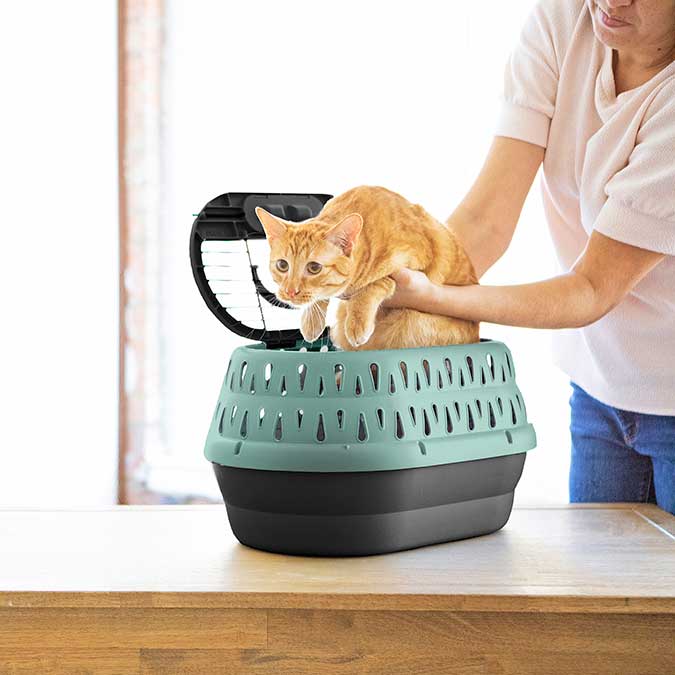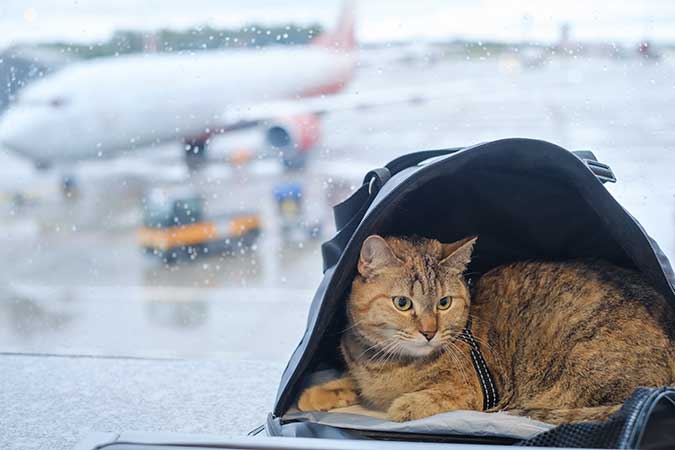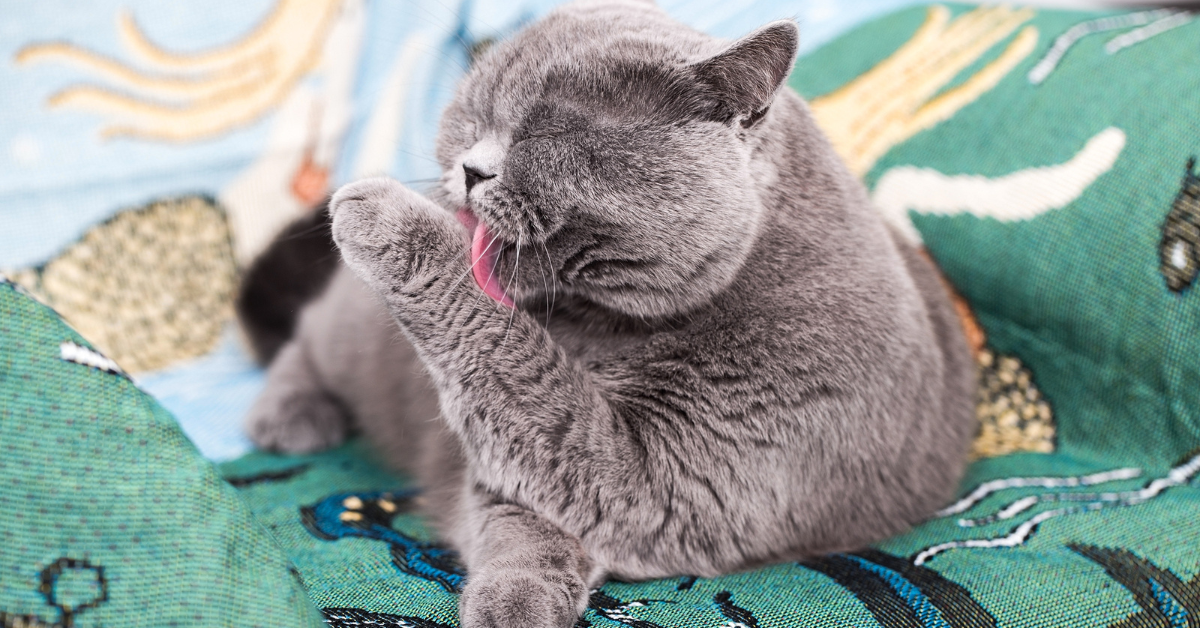Traveling With a Cat

Whether you're moving or taking a long vacation, there are times when traveling with your cat is something you just can't avoid. Cats generally are not as easy to travel with as dogs or other pets, but there are plenty are ways to keep them comfortable while taking them out of their everyday environment. If you have a trip coming up and are worried about traveling with your feline friend, continue reading for some tips, tricks, and other helpful information.
THINGS TO KNOW BEFOREHAND
First things first, it's helpful to get your cat accustomed to traveling while they're young. This way, they'll become more familiar with riding in their carrier and being out of the house. This is not to say that older cats can't travel, but they may have a harder time adjusting than a younger cat will. Many cats don't love traveling in general and experience nervousness and anxiety about being taken out of their home and into a strange vehicle.
However, there are some instances in which traveling with your cat is necessary and something that can't be avoided, such as moving or even visiting the vet. If you're planning on taking an extended trip or vacation and have no other choice than to bring your cat with you, keep reading to see the options you have when traveling with your cat.
CAR TRAVEL
Traveling by car is the easiest way to take your cat along with you. This way, your cat stays with you and avoids being around more people which may make them nervous. The first thing to remember is that you should never let them roam your car freely as you're driving. Be sure that they are securely in their cat carrier and that it is fastened in place with a seatbelt. It's recommended to have them in the back seat in case the airbags go off in your car.
When looking for a cat carrier, try to find one that has a door on top of the carrier. These types of carriers are usually referred to as Top Load Kennels, like the one shown below. Carriers with the door on top make travel less stressful for cats and makes it much easier for pet-parents to load and unload their cats.

Speaking of cat carriers, if your cat has never traveled out of your home before, it's helpful to give them a bit of time to adjust to being in their carrier. Forcing them inside right before you leave will make them feel scared, stressed, and uncomfortable. Set the carrier out several days before your trip and leave the door open, giving them a bit of time to investigate and explore. You may want to feed your cat in their carrier or leave treats inside to help them establish a positive association with it.
After your cat feels comfortable in its carrier, practice closing the door and carrying it around the house. Do this a few times, and then practice going for a short test drive. This will slowly help your cat feel more comfortable being out of their element. Once your cat seems used to its carrier, you're ready for your road trip!
A few other things to remember with car travel. Bring along all of the necessary food and items your cat needs and keep them in a place that is easily accessible, just in case you need to grab something quickly. It's also a good idea to take rest stops so you can offer your cat food, water, and give them a chance to use their litterbox (you can keep a small litter pan on hand for stops, or if their carrier is large enough, put it in with them.) Remember to never leave your cat unattended in your car. This is especially important in extreme temperatures but is a rule that should be followed regardless. If you need to leave the car, have someone else stay behind with your cat or take them along in their carrier if you're able to.
AIR TRAVEL
Flying can be very stressful for cats, so it's only recommended as a last resort. There are also certain breeds of cats that should not fly. These are brachycephalic breeds such as Persian and Himalayan cats. Because of the shape of their face, they may experience trouble breathing at higher altitudes when flying. No matter what breed of cat you have, be sure you pay a trip to the vet before you decide to have your cat fly with you. Your vet will be able to help you decide whether or not your cat is healthy enough for this form of travel or if there are too many risks involved.

You'll also want to double-check with your airline to see if you can carry your cat along with you into the cabin. Also, be sure to double-check that the cat carrier you have fits underneath the seat in front of you. Some airlines may require that you bring a specific kind of carrier, so be sure to check ahead of time. If allowed, soft-sided carriers are often easier for air travel. Next, check to ensure your cat is up to date on all of their vaccines and check to see if you need to bring any vaccination records or paperwork along with you.
Keep in mind that your cat's carrier will need to go through an x-ray screening machine, but your cat cannot. You'll need to take them out and carry them with you for a short period of time, so make sure your cat is wearing a harness and leash so that they won't be able to wiggle out of your arms and run away.
If your airline does not permit you to carry pets inside the cabin with you, the last resort is to have them travel in the cargo hold with checked luggage. Although it is not uncommon for pets to travel this way, it's not the safest way to have them fly, especially since luggage can sometimes move around during the flight. If at all possible, avoid having them fly with the cargo and see what other options are available before resorting to this.
A FEW OTHER TRAVEL TIPS FOR DRIVING AND FLYING:
- Line your cat's carrier with a potty pad in case they need to go and you're not able to let them use their litterbox. This way, they'll make less of a mess in their carrier.
- It's best for your cat to travel on an empty stomach to avoid nausea that can come with riding in a car or flying. Try not to feed them for 4/6 hours prior to leaving, but also keep some food handy in case their hungry upon arrival. In addition to this, you'll also want to bring a travel bowl so that you can give them some water to keep them hydrated.
- Be sure your cat is wearing a collar with tags, and have a luggage tag on your cat's carrier with your contact info. as well.
- Once you've reached your destination, examine your cat and give them a bit of extra love! They might still be stressed and possibly tired from all the excitement traveling can bring along.
CONCLUSION
There is a lot to consider when it comes to traveling with a cat. While it might not always be easy, it's certainly possible to have a smooth trip with them. All it takes is a little planning.
Safe travels!
Sources:
- https://vcahospitals.com/know-your-pet/road-trips-and-car-travel-with-your-cat
- https://www.gopetfriendly.com/blog/tips-and-tricks-for-road-tripping-with-your-cats/
- https://be.chewy.com/pet-parenting-travel-how-to-take-a-road-trip-with-your-cat/
- https://www.humanesociety.org/resources/travel-safely-your-pet-car-airplane-ship-or-train
- https://vcahospitals.com/know-your-pet/flying-with-your-cat
Previous article

Next article

Related posts
View all-

5 Simple Tips to Make Sure Your Cat Drinks Enough Water
Ensuring your cat stays hydrated is important, but it can be challenging since many cats don't drink enough water. Dehydration can lead to kidney disease and other health issues. Fortunately, you can encourage your cat to drink more with a few simple changes. Read Article -

How to Keep Your Cat Busy at Night (So You Can Sleep)
For many cat owners, the quest for a good night's sleep while keeping their feline friends content and engaged can seem like a never-ending battle. Cats, naturally more active at night or early in the morning, often disrupt your sleep schedules with nocturnal activity, whether through playful nature or seeking attention. Read Article -

Should You Bathe Your Cat? Everything You Need to Know About Cat Hygiene
When it comes to cat hygiene, a common question among cat owners is, "Should you bathe your cat?" Understanding how to care for felines, especially bathing cats properly, is crucial for maintaining their overall health. Most cats are fastidious groomers, but specific scenarios like long-haired cats getting dirty or skin irritations, might require a bath.
Read Article



